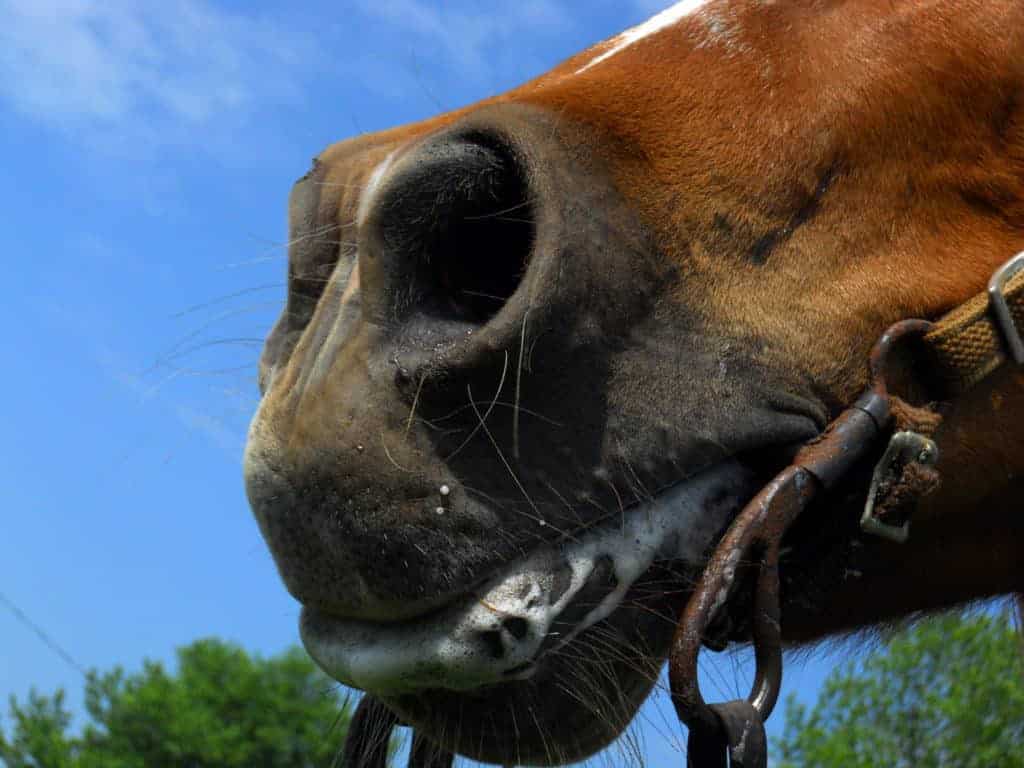
The Science Behind Equine Nasal Strips
While some studies support the use of equine nasal strips, others have yielded less promising results.

While some studies support the use of equine nasal strips, others have yielded less promising results.

Dutch scientists determined that all non-natural head and neck positions affect horses’ breathing.

Equine respiratory topics including evaluating the upper respiratory tract and treating its ailments and managing inflammatory airway disease in horses is included in the Respiratory section of the 2011 AAEP Convention held in San Antonio, Texas.

A rundown of respiratory diseases commonly observed in performance horses.

A number of air quality factors in barns can make it harder for your horse to breathe, compromising his health and performance.

Equine herpesvirus-1 is a highly contagious infection that can cause respiratory disease in weanlings and young horses, abortion in pregnant mares, and neurologic disease in adult horses. Herpesvirus is widespread in the equine population.

Horse respiratory issues discussed during the 2010 American Association of Equine Practitioners convention included PCR testing for specific diseases, ceftiofur antibiotic for pneumonia, and electroacupuncture for chronic respiratory disease.

High ammonia levels in barns can be detrimental to horses’ respiratory health. Know how to keep them low.
Since you can’t tell your horse to “Take a deep breath,” listening to your horse requires some technique to hear lung sounds.

Understand the structure and function of the equine upper respiratory system to understand horses’ breathing.

Researchers discussed respiratory topics in horses including influenza outbreaks and vaccination boosters, furosemide for exercise-induced pulmonary hemorrhage, dorsal displacement of the soft palate, dynamic respiratory tract endoscopy (during exercise), and more at the 2009 convention of the American Association of Equine Practitioners.

This is exemplified by the respiratory and cardiovascular systems, which must get up to “speed,” often from a standing start, to ensure that sufficient oxygen is delivered to the working muscles to allow them to continue to function optimally.

The harder a horse works, the more oxygen it needs and the more air it must move into and out of the lungs. Understanding how the horse’s respiratory system works can help horse owners recognize problems and/or manage horses to prevent them.

Learn how your horse’s anatomy works with our complete anatomy and physiology guide, including basic terminology, skin, forelimbs, hindlimbs, feet/hooves, head and neck, tendons/ligaments, muscles, digestive, cardiovascular and reproductive systems.
By the time a horse crosses the finish line in a five-furlong race, has completed a Grand Prix show jumping round, or gone one-sixth of the way round a 3-star cross-country course, he will have moved somewhere around 1,800 liters of air in and out of the lungs.
The Rutgers Equine Science Center will sponsor its annual Equine Science Update on Tuesday, December 12, 2006 from 6 to 9 p.m. at the New Jersey Museum of Agriculture on the Cook Campus of Rutgers, The State University of New Jersey.
Stay on top of the most recent Horse Health news with
"*" indicates required fields